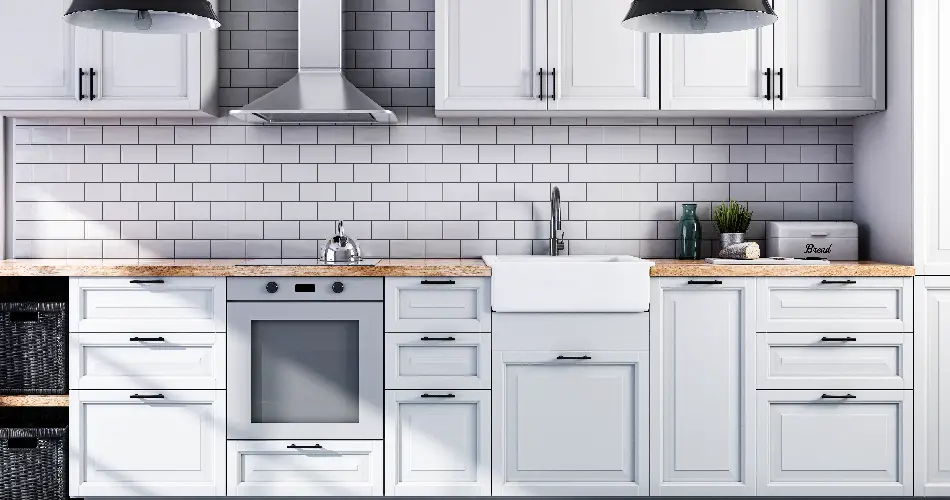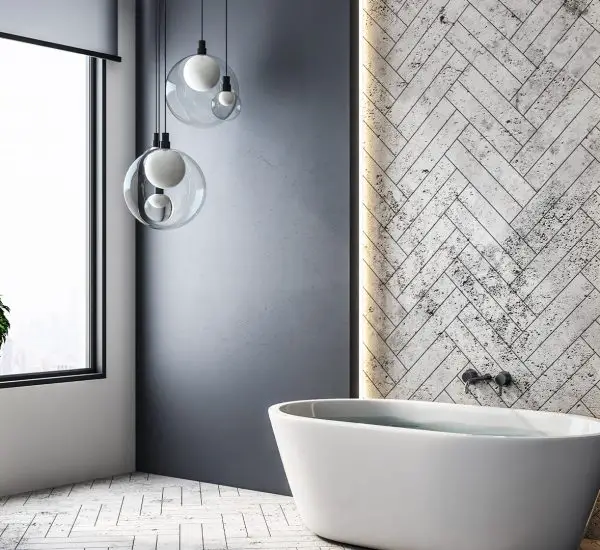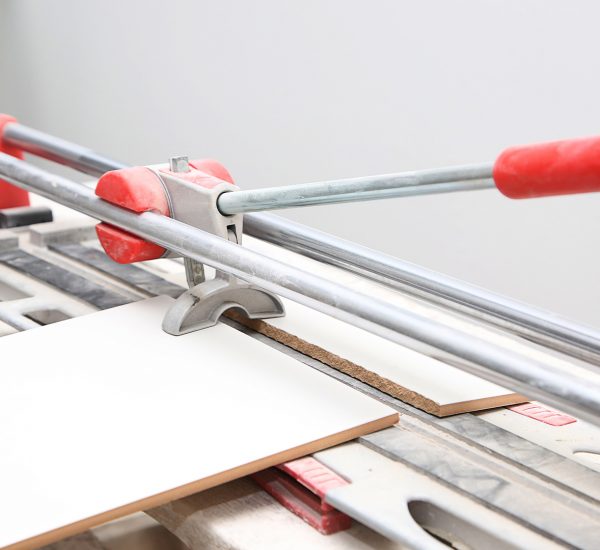Wanting to change things up around the home every so often is a perfectly natural thing. It’s why decorating, for many households, isn’t a one-time event so much as a rolling project that only ends when you move into a new home. With the kitchen being one of the most-used rooms in the house, wanting to refresh its appearance from time to time is to be expected.
Unfortunately, it’s also one of the hardest rooms to give a fresh look to. You can update your living room with little more than some new wallpaper, or a fresh coat of paint. But a kitchen is made up of fixed-cabinets and countertops, and replacing those is a much larger task than a typical redecorating job.
Still, there are things you can do to give your kitchen a fresh new feel without completely gutting it, and tiling is up there as one of the top options. Not only can tiles make a huge visual difference, but they are incredibly functional and convenient. They are also a little trickier to install compared to a fresh coat of paint, but that’s why we’re here. We can’t make you into a great tiler, but we can help you avoid the most common mistakes that could lead to you being a lousy tiler!
Mistake 1: Stick to the Correct Adhesive
If we were to liken tiling to building a house (we’ve all done that, right?), then the adhesive you use would be the foundations. Now, while most of probably haven’t built a house, we all understand that having inadequate foundations can lead to a world of trouble further down the line.
It is about this stage where many novice tilers will be wondering at the notion that there are multiple types of tile adhesive. There are, in fact, several different kinds of tile adhesive. For example, if you are tiling an area that you expect to get wet—such as around a bath or the splashback zone behind your sink—then you’ll need waterproof adhesive. If you are tiling a wall that will experience movement, you will need a flexible adhesive. And it should go without saying that the adhesive used to attach small, 6mm ceramic tiles to the wall is not suitable for large, 10mm thick granite floor tiles.
Another thing to consider is cost-effectiveness. Like all things, it’s cheaper to buy in bulk. That being said, if you are tiling a tiny area, a pot of ready-mixed adhesive should do the job just fine. Buying and mixing a trade-size bag would be a huge waste of adhesive and your money. But if you’re tiling a whole wall, it would cost you a small fortune to use ready-mixed adhesive.
Mistake 2: Preparing Your Surfaces
Sticking with our tenuous house-building analogy, if the adhesive is our foundations, then the surface we are tiling on is the ground under our house. Choosing the best adhesive for the job will do you no good if the surface on which it is to be smothered isn’t ready.
If you are tiling onto a freshly plastered wall, you will need to make sure it is sealed before you get to any tiling. You can do this with a mixture of PVC glue and water. Be sure to check for anything sticking out of the wall, like old screws or blobs of plaster. You don’t want to be in the situation of removing obstacles while your mixed adhesive is sat there, setting.
Also, one of the most important things to remember—your surface should be dust and debris free before you so much as offer up a tile. A particle of dust acts as a barrier between the adhesive and the surface. Where that particle is, the adhesive is sticking to the dust, not the wall. A lone dust particle isn’t a problem, but if you have a relatively uniform layer of dust over your surface, it can severely weaken the grip of your adhesive.
Mistake 3: Don’t Dab
No, we’re not talking about a social media trend, we’re talking about “dotting and dabbing”. This is the name used for applying blobs of adhesive to the corners of your tiles, rather than evenly spreading it around the surface you are tiling.
There are many issues with this method, such as the tile having a weaker attachment to the wall. With larger tiles, you could also end up cracking them if pressure is applied in the middle of the tile. Thinking longer-term, dotting and dabbing results in a lot of space behind your tiles where moisture can get in. And in the damp, dark behind your tiles, mould will almost certainly grow.
Mistake 4: Grouting: Find the Goldilocks Zone
It can be tempting to try and speed things along, but grouting is a job that you should take your time with. Firstly, resist the urge to start grouting too soon. If you grout while the adhesive is still setting, you risk trapping moisture behind your tiles which, as mentioned above, can result in mould.
When you do get started, make sure you get a nice even spread, and really get that grout deep into the gaps between your tiles. If you don’t get enough grout in there, you’ll start to see gaps as the grout contracts. Once your tiles are grouted, be sure to give it plenty of time to set before cleaning away the excess. If you hit it with that essential tiling tool—the damp cloth—too soon, you could end up ruining your nice smooth finish with unsightly gouges.
Mistake 5: Batten Down the Hatches (and Tiles)
If you intend for your tiles to follow nice straight lines, you need to use battens. As good as we’re sure your eyesight is, it’s not as accurate as using a good old lump of wood. Especially if you eye in your tiles with an edge that is not straight.
Battens are just small lengths of wood that you can attach to the surface you are tiling, giving you a nice straight starting point to build up from. It is much easier to fix a batten to the wall than it is to check every single tile on your first row to make sure it is straight. Much easier.




